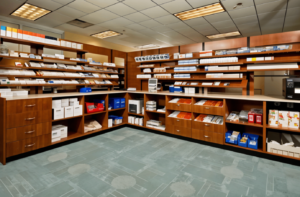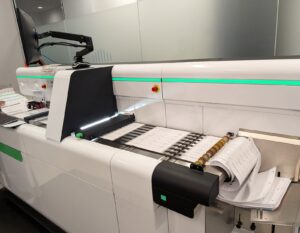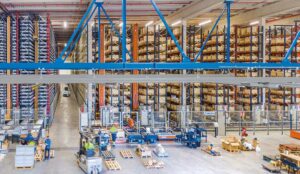School libraries play a vital role in fostering knowledge and literacy among students. As educational landscapes evolve, the need for sustainable preservation practices in these institutions becomes increasingly apparent. By incorporating principles of sustainability into preservation efforts, libraries can better serve their communities while minimizing environmental impact. In the digital age, where content digitization is rampant, finding a balance between physical and digital collections is crucial. This blog will delve into the core principles of sustainable preservation, funding opportunities available for such projects, leveraging technology for preservation, and the importance of environmentally friendly practices in ensuring the longevity of library resources. Join us on this journey towards creating sustainable and resilient school libraries.
Understanding the Need for Sustainability in School Libraries
School libraries play a crucial role in education by providing access to information and fostering a love for learning. However, they face environmental challenges like rising energy consumption and the impact of climate change. To ensure the long-term preservation of intellectual property and cultural heritage, sustainable preservation practices are essential. By aligning with sustainable development goals and leveraging best practices from the international federation of library associations, school libraries can establish preservation programs that prioritize the longevity of physical and digital collections. It is imperative for librarians and organizations to understand the significance of sustainable preservation in maintaining the integrity of academic libraries and archives for future generations.
The Role of School Libraries in Education Today
School libraries play a pivotal role in education today, serving as dynamic hubs that facilitate learning and innovation. They are not merely repositories of books; instead, they are evolving spaces that offer digital resources, foster research skills, and promote critical thinking. School libraries contribute significantly to information literacy, supporting students in navigating the vast landscape of knowledge available. By integrating sustainable preservation practices, school libraries ensure that future generations can access valuable resources while minimizing environmental impact. Embracing digital transformation and upholding traditional values, these libraries empower students to explore diverse perspectives and cultivate a lifelong love for learning.
Environmental Challenges Facing School Libraries
School libraries encounter environmental challenges that impact their preservation efforts. Climate change poses a threat to storage environments, potentially jeopardizing valuable collections. Rising energy consumption in maintaining libraries calls for sustainable development practices to reduce environmental impact. The need to balance the preservation of physical and digital content presents a significant challenge for librarians. Ensuring image permanence in the face of evolving technologies is crucial for long-term preservation. Adhering to best practices in sustainable preservation is essential to combat these environmental challenges and safeguard the cultural heritage stored within school libraries.
Core Principles of Sustainable Preservation
Promoting eco-friendly practices is at the heart of sustainable preservation. By integrating energy-efficient systems and eco-conscious methods, school libraries can reduce their carbon footprint. Balancing digital and physical collections is another key principle. Leveraging digital preservation techniques alongside traditional methods ensures that valuable resources are safeguarded for the future. This harmonious approach optimizes storage space and minimizes environmental impact. By adopting these core principles, school libraries can contribute significantly to sustainable development goals while preserving intellectual property and cultural heritage for generations to come.
Promoting Eco-Friendly Practices
Libraries can champion eco-friendly practices by implementing sustainable preservation strategies. Embracing digital preservation reduces the need for physical storage space, contributing to energy efficiency. Collaborating with organizations like the International Federation of Library Associations aligns these efforts with global sustainable development goals. Utilizing best practices from the Image Permanence Institute ensures the longevity of collections while minimizing environmental impact. Librarians can prioritize the use of eco-friendly storage media and maintain an optimal storage environment to support preservation programs. By integrating intellectual property rights considerations into preservation initiatives, schools can create a sustainable foundation for their library resources. This holistic approach not only safeguards cultural heritage but also reduces the carbon footprint of academic libraries.
Balancing Digital and Physical Collections
In modern school libraries, balancing digital and physical collections is imperative for sustainable preservation. Librarians navigate the digital landscape while still valuing traditional books to cater to diverse learning styles and preferences. Striking this balance ensures access to resources while upholding preservation principles. Digital preservation tools aid in maintaining the integrity of electronic resources, complementing physical archives. By embracing both formats, schools align with international standards and sustainable development goals, fostering intellectual property rights and cultural heritage preservation. This equilibrium mitigates energy consumption and storage concerns, contributing to the longevity of collections in an ever-evolving educational landscape.
Digitization as a Tool for Preservation
Digitization plays a critical role in sustainable preservation practices for school libraries. By converting physical materials into digital formats, libraries can enhance access while safeguarding valuable resources. Digital preservation ensures the longevity of materials beyond physical degradation, aligning with sustainable development goals. Leveraging digitization minimizes the environmental impact associated with traditional preservation methods, reducing energy consumption and promoting eco-friendly practices. Additionally, digital copies serve as backups, safeguarding against potential loss or damage due to climate change or other environmental challenges. Integrating digitization into preservation programs empowers librarians to uphold intellectual property rights and broaden access to cultural heritage materials, thereby fostering a more sustainable and inclusive learning environment.
Choosing Materials for Digitization
When selecting materials for digitization in school libraries, it is essential to prioritize items that align with the institution’s collection policy and educational objectives. Consider focusing on rare or fragile documents that hold historical significance. Assess the condition of materials to determine suitability for digitization, taking into account factors like fragility, format, and intellectual property rights. Collaborate with preservation experts to ensure that the digitization process adheres to best practices for long-term access and storage. Prioritize materials that support the curriculum, align with sustainable preservation practices, and contribute to the cultural heritage of the school community.
Long-Term Benefits of Digital Archives
Digital archives offer extensive advantages, ensuring the long-term preservation of valuable resources. By embracing digital preservation, school libraries align with sustainable development goals, fostering sustainability and reducing energy consumption. These archives contribute to the intellectual property framework, safeguarding cultural heritage against climate change impacts. Leveraging advanced technologies and storage media, digital archives enable efficient access and dissemination of information. Librarians can implement preservation programs based on best practices from the international federation of library associations, ensuring the longevity of digital content. The synergy between physical and digital collections establishes a robust foundation for preserving academic resources, laying the basis for future preservation initiatives.
Climate Control and Energy Efficiency
Utilizing climate control and maximizing energy efficiency are paramount in sustainable preservation practices. School libraries must maintain stable temperature and humidity levels to safeguard physical materials like books and documents. By implementing energy-efficient systems, libraries can reduce their carbon footprint and contribute to sustainable development goals. The storage environment plays a crucial role in preserving the integrity of collections and mitigating damage caused by fluctuating climatic conditions. Balancing these factors enhances the longevity of materials while minimizing energy consumption. Librarians should adopt best practices recommended by organizations like the International Federation of Library Associations to ensure the preservation of cultural heritage for future generations.
Implementing Green Building Standards
Green building standards play a pivotal role in the sustainable preservation of school libraries. By adhering to eco-friendly construction practices, libraries can reduce energy consumption and promote a healthier storage environment for their collections. Implementing design strategies that focus on sustainability aligns with the principles of sustainable development and supports the preservation of cultural heritage for future generations. Adopting green building standards not only contributes to the overall well-being of the environment but also underscores the commitment of libraries to sustainable practices. This approach ensures that school libraries function as environmentally responsible institutions in line with international sustainable development goals.
Innovations in Energy-Saving Systems
Adopting cutting-edge technologies like automated lighting systems and smart climate control can significantly reduce energy consumption in school libraries. These innovative systems adjust lighting levels based on natural light availability and occupancy, leading to substantial energy savings. By implementing occupancy sensors and programmable thermostats, libraries can ensure efficient energy usage without compromising user experience. Additionally, integrating renewable energy sources such as solar panels further enhances sustainability efforts, making libraries more environmentally friendly. Embracing energy-efficient practices not only aligns with sustainable development goals but also sets a positive example for students and the community, promoting a culture of environmental responsibility.
Security Measures for Protecting Collections
Implementing stringent security measures is imperative for safeguarding collections in school libraries. By integrating access control systems and surveillance cameras, libraries can monitor and restrict unauthorized entry. Utilizing RFID technology enables efficient tracking and management of assets, minimizing the risk of theft or loss. Environmental monitoring systems help maintain optimal storage conditions, protecting materials from deterioration. Disaster recovery plans should be in place to mitigate potential risks from natural disasters or emergencies. Training staff on proper handling and security protocols further fortifies the protection of valuable resources. Embracing these security measures ensures the long-term sustainability and preservation of library collections.
Physical Security Technologies
Incorporating physical security technologies is paramount in safeguarding valuable collections within school libraries. Implementing advanced security systems like biometric access control and surveillance cameras can effectively deter theft and unauthorized access. Utilizing sensor-based monitoring tools can help maintain optimal storage conditions, ensuring the longevity of physical materials. Additionally, integrating RFID technology enables efficient tracking and management of resources, enhancing overall security measures. By embracing these innovative solutions, school libraries can not only protect their assets but also contribute to the sustainable preservation of cultural heritage for future generations.
Cybersecurity for Digital Collections
Cybersecurity for digital collections is crucial in ensuring the integrity and confidentiality of information stored in school libraries. With the increasing digitization of content, librarians must prioritize safeguarding against cyber threats to maintain the trust of users. Implementing robust security measures aligns with the sustainable preservation practices advocated by international library associations. It is essential to adhere to best practices in digital preservation to protect the intellectual property and privacy of individuals accessing digital resources. Leveraging advanced encryption methods and secure storage environments can help mitigate risks posed by cyberattacks on school library archives.
Engaging Students with Sustainable Initiatives
Empowering students to engage with sustainable preservation practices fosters a culture of environmental conscientiousness within school libraries. By integrating interactive learning experiences that highlight the importance of sustainability, educators can instill a sense of responsibility towards preserving cultural heritage for future generations. Encouraging students to participate in eco-friendly initiatives, such as recycling programs or energy-saving campaigns, not only supports the school’s sustainability goals but also cultivates a deeper understanding of the significance of environmental stewardship. Collaborating with students on projects related to digital preservation and energy consumption allows them to contribute meaningfully to the library’s preservation efforts while developing crucial skills in line with sustainable development principles.
Educational Programs on Sustainability
Educational programs on sustainability in school libraries play a pivotal role in fostering environmental awareness among students. These programs go beyond traditional academic teachings by incorporating sustainable development goals and environmental conservation practices. Librarians often collaborate with organizations like the International Federation of Library Associations to integrate such initiatives into curricula effectively. By engaging students in activities focused on sustainable preservation practices, schools contribute to a broader ethos of sustainability in their communities. These educational efforts not only raise awareness about climate change and energy consumption but also instill a sense of responsibility towards preserving cultural heritage for future generations.
Student-Led Conservation Projects
Student-Led Conservation Projects empower students to actively engage in preserving library materials. Through hands-on initiatives, students contribute to sustainable preservation efforts, aligning with the Sustainable Development Goals. By partnering with educators and librarians, students gain valuable insights into intellectual property and preservation best practices. These projects foster a sense of ownership and responsibility towards cultural heritage within the school community. Implementing such programs not only educates students on the importance of sustainability but also nurtures their interest in preservation practices.
Funding Opportunities for Sustainable Projects
Exploring funding opportunities for sustainable projects in school libraries is instrumental in ensuring the longevity and success of preservation programs. By tapping into grants and resources tailored for educational institutions, schools can access financial assistance to support their sustainability initiatives. Collaborating with community organizations also presents a viable avenue for securing additional funding and establishing sustainable partnerships. These financial resources enable schools to implement eco-friendly practices, invest in innovative preservation technologies, and bolster their efforts towards sustainable development and preservation of intellectual property. Leveraging these funding opportunities empowers school libraries to enhance their preservation programs while contributing to broader sustainable development goals within the educational sector.
Grants and Resources for Schools
Grants and resources play a pivotal role in supporting sustainable preservation practices in school libraries. Schools can explore funding opportunities offered by organizations like the International Federation of Library Associations for initiatives aligned with sustainable development goals. The Image Permanence Institute provides valuable resources for maintaining the integrity of collections. Leveraging grants can aid in implementing preservation programs, ensuring the long-term viability of intellectual property. By accessing financial support, schools can enhance their storage environments, reduce energy consumption, and contribute to the preservation of cultural heritage. Partnering with relevant entities opens avenues for additional resources, empowering school libraries to adopt best practices in sustainability.
Partnering with Community Organizations
Engaging with community organizations is paramount for sustainable preservation practices in school libraries. Collaborating with local groups aligns with sustainable development goals and enhances access to valuable resources. By joining forces, libraries can pool expertise and resources to tackle environmental challenges effectively. Initiatives like partnering with the International Federation of Library Associations promote best practices in preservation programs. Leveraging such partnerships fosters a culture of sustainability and intellectual property protection within academic libraries. This collaborative approach not only optimizes energy consumption but also fosters a shared commitment to safeguarding cultural heritage for future generations.
Leveraging Technology in Preservation
Librarians today are embracing cutting-edge technology to enhance their preservation efforts. By incorporating digital preservation tools and platforms, schools can safeguard their collections for future generations. The advent of AI has revolutionized library preservation, offering advanced methods for maintaining and protecting valuable materials. These technologies not only streamline the preservation process but also contribute to sustainable development goals by reducing energy consumption and promoting eco-friendly practices. Leveraging such tools ensures the long-term protection of cultural heritage while adapting to the evolving digital landscape.
Emerging Tools and Platforms
As technology advances, emerging tools and platforms play a crucial role in sustainable preservation practices for school libraries. The integration of digital preservation solutions such as cloud storage, metadata management systems, and AI algorithms enhances the efficiency and accessibility of library resources. Platforms like the International Federation of Library Associations provide guidelines for maintaining digital collections in adherence to sustainable development goals. Libraries can leverage tools from the Image Permanence Institute for monitoring and controlling storage environment conditions to ensure image and document longevity. By staying abreast of the latest technologies and incorporating them into preservation programs, school libraries can contribute to the preservation of cultural heritage for generations to come.
The Impact of AI on Library Preservation
AI is revolutionizing library preservation by automating tasks like document sorting and metadata tagging. With AI, libraries can efficiently manage vast amounts of data, improving preservation efforts. Through machine learning algorithms, AI helps predict potential risks to collections, aiding in preventive conservation measures. AI also enhances digitization processes, ensuring the long-term accessibility of materials. By leveraging AI tools, libraries can streamline preservation workflows and allocate resources effectively. However, ethical considerations such as data privacy and intellectual property rights must be addressed. The integration of AI in library preservation marks a significant advancement in ensuring the long-term sustainability and accessibility of cultural heritage materials.
Conclusion
Libraries play a pivotal role in education and societal development, aligning with sustainable preservation practices crucial for the longevity of their collections. By adhering to the principles of sustainable development and incorporating eco-friendly initiatives, school libraries can mitigate environmental challenges. Leveraging digital technologies alongside traditional preservation methods ensures a balance between accessibility and conservation. Securing funding through grants and strategic partnerships with community entities fosters sustainable initiatives. The evolution of technology, including AI applications, offers innovative solutions for preserving cultural heritage in school libraries. Embracing sustainable preservation not only safeguards intellectual property but also contributes to the broader goals of environmental responsibility and resource efficiency in academic settings.






